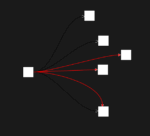In our rapidly evolving data landscape, companies rush to harness vast reservoirs of data in their digital lakes. But when confusion sets in, many businesses resort to “quick fixes,” using reporting software as their primary tool to manage their data lakes. On the surface, reporting software presents an immediate solution to interpreting and visualizing complex data. However, beneath the surface lies inherent structural vulnerabilities and missed opportunities for true data-driven innovation. Far too often, companies believe their dashboards are the answer, only realizing later that a failing dashboard strategy masks deeper issues within their foundational data practices. As data strategists at a software consulting firm focused on data, analytics, and innovation, we see this trend frequently and strongly caution against it. While visualizations are essential, using your reporting software for data lake management is like fixing cracks on a bridge with paint—you might temporarily mask the problem, but you’re not solving anything.
Misusing Reporting Tools Masks Deep Structural Data Issues
Reporting software is an integral part of modern analytics ecosystems. Robust visualizations and dashboards enable teams to quickly identify insights, trends, and actions. However, when reporting tools become the default method for data lake management, companies risk creating fragile data solutions that break easily, lack scalability, and hide critical underlying issues. Reporting software is built primarily for visualization and analytics, not comprehensive data lake management or data governance.
The first issue arises when complex data manipulation and cleaning tasks, traditionally handled through Extract, Transform, Load (ETL) processes, are shifted to the reporting layer. This compromises data quality significantly and increases risk. It becomes challenging to maintain consistency, integrity, and trust in data when the primary ETL processes are in a visualization environment. Properly using ETL in data warehousing ensures your data is clean and consistently reliable, forming a solid, scalable backdrop from which true analytics can flourish.
Moreover, when teams use reporting tools to cleanse and organize data, they inevitably introduce inefficient practices and duplicate tasks across reports. This redundancy wastes resources, results in conflicts between measures and KPIs, and creates disparate interpretations of data even within the same organization. Ultimately, the true potential of your data lake remains untapped, as these hurdles obscure deeper patterns and valuable trends.
Reporting Tools are Not Designed for Deep Data Management
Misapplication of visualization software means fundamental data tasks—such as data profiling, cleansing, mastering pattern matching with SQL’s LIKE operator, and ensuring data integrity—become challenging. Reporting software is excellent when leveraging properly structured and governed data. However, it quickly becomes problematic when it takes on duties it wasn’t built to manage.
Data lakes inherently store a wide variety of structured, unstructured, and semi-structured data. Effectively handling such complexity requires a mature system of database engine optimization, extensive cleansing, data validation, cataloging, and appropriate metadata management. Dedicated data management technologies, combined with robust ETL or ELT processes and robust SQL querying capabilities, are vital. Conversely, reporting tools often fail to support complex logic necessary for deep pattern analysis and data refinement workflows, becoming bottlenecks over time.
Moreover, your reporting stack should leverage refined, quality-assured data to provide transparent analytic insights swiftly—not correct deep structural or logical data errors. If your dashboards consistently break, data reliability comes under question, severely limiting the decision-making utility of your analytics. Addressing foundational problems with suitable database and ETL systems, instead of visually-oriented solutions, will safeguard data integrity over the long term.
Data Governance and Ethics Require Structural and Strategic Solutions
The impact of data analytics reaches far beyond improving organizational performance. Today’s data landscape profoundly affects job markets, ethics, regulatory environments, privacy, and ultimately, the trustworthiness of your business reputation. The Austin job market, for example, shows considerable demand for skilled workers familiar with data governance, ethical data practices, and trustworthy advanced analytics. Clearly, companies rely more than ever on secure, ethical, and responsible data management strategies.
Companies that substitute structural data governance strategies with reporting tools inadvertently undermine compliance, ethics, and regulatory efforts. Detailed focus on data governance—establishing controls, ethical data gathering practices, and understanding standards—is becoming critical to business sustainability. Businesses urgently need comprehensive perspectives on data regulation and ethics to ensure compliance with current laws and evolving privacy regulations.
Relying on reporting software to address governance inevitably neglects ethical implications of data usage. Conversely, investment in structural solutions enables clear auditing, documentable ethics practices, and transparency. Consider implementing ethical data solutions into your data engineering pipelines and checking software engineering ideas for ethical data analysis. Building these principles into your data infrastructure fosters compliance, reduces legal risk, and positions your enterprise ahead of future regulatory shifts and ethical data imperatives.
Uncovering True Potential Requires Purpose-Built Data Systems and Processes
Properly structured and governed data infrastructures optimize analytics workflows significantly. Specialized data governance software, expert analytics engineering, ETL technologies, and data warehouses built explicitly for data lakes create a powerful analytics backbone. Intelligent investment ensures scalability, reliability, and accuracy, bolstering the confidence necessary to implement data-driven transformation strategies and build truly insightful reporting.
Instead of patching over complex structural issues using visualization software, establish dedicated data governance and data warehouse teams. Equip them with proactive resources to manage and validate data consistently. Strong analytics foundations rely on properly engineered systems, enabling your team to swiftly detect and leverage emerging insights instead of constantly troubleshooting broken dashboards. An effective data strategy empowers you to focus wholeheartedly on advanced analytics innovations and creative analytics projects—increasing strategic competitiveness in your market space.
Whether cleaning and refining customer data or analyzing real-time operations, strategically optimized data processes generate measurable business insights. The goal isn’t to merely see the data through dashboards, but rather to meaningfully analyze and interpret clean, validated information confidently at scale. By protecting yourself against shortcut temptation, you unleash the true transformative potential of analytics.
Reclaiming Stability: A Proactive Path to Sustainable Data Management & Reporting Excellence
Correcting the root-cause issues affecting your data lake with purpose-built data solutions, rather than relying on reporting tools as band-aids, positions your company advantageously for long-term success. Transitioning away from superficial solutions demands courage, executive support, and a commitment to addressing deeply-rooted structural challenges. Consulting professionals specialized in data visualization and technical infrastructure assessments can guide your journey, ensuring your data solutions are as robust and insightful as possible.
As technical strategists, our team’s experience demonstrates repeatedly how companies thrive when proper data management systems form the backbone of analytics rather than reporting tools serving double duty. Prioritize assessing your existing framework and highlighting structural inefficiencies through expert insights from analytic strategy consulting professionals. Shift resources away from fixing dashboards and toward solidifying backend infrastructure, governance frameworks, ethical data practices, and sustainable data processes.
Ready to revolutionize your analytics approach beyond mere reporting solutions? Explore data visualization services from established specialists committed to fostering genuine data-driven transformations. Establishing stable, scalable, and ethical data environments yields long-term sustainable value, enabling you to compete fiercely in data-savvy industries. Join leading enterprises and proactively transition toward strategic, stable, and insightful data management built on dedicated infrastructure investments.
Related Resources to Deepen Your Data Strategy:
– Unlock insights by understanding the benefits of ETL in data warehousing – The Benefits Of Using Etl In Data Warehousing
– Improve data querying by mastering pattern matching with the LIKE operator in SQL – Mastering Pattern Matching With The Like Operator In Sql
– Explore the impact of data analytics on the Austin job market – The Impact Of Data Analytics On The Austin Job Market

























